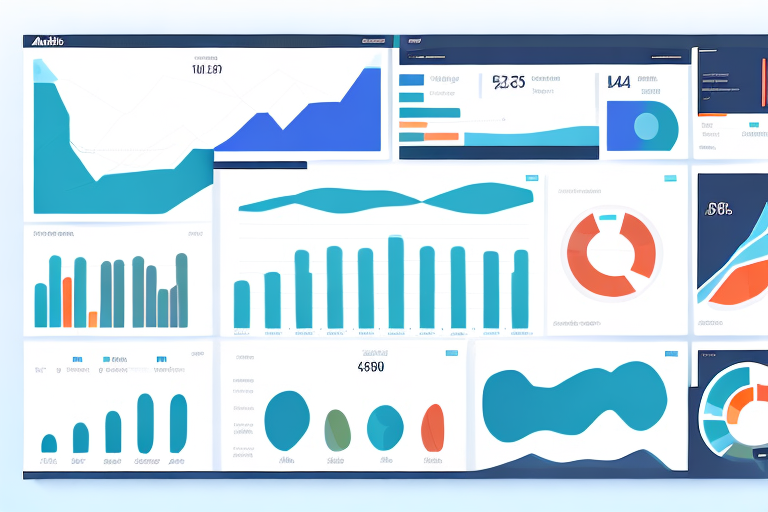Understanding Key Performance Indicators for Logistics
As supply chains become more complex and competitive, the need for monitoring and measuring logistics performance becomes increasingly crucial. Key Performance Indicators (KPIs) are a set of metrics that logistics managers can use to track and analyze the performance of their operations, identify areas for improvement, and make data-driven decisions. This article provides a comprehensive overview of the types, importance, and application of KPIs for logistics operations, as well as best practices for interpreting and reporting KPIs.
The Role of Key Performance Indicators in Logistics Management
KPIs provide a way for logistics managers to assess the effectiveness and efficiency of their delivery, transportation, warehousing, inventory management, and other logistics processes. They help to identify deviations from planned performance, monitor trends, assess strategic alignment, and benchmark against industry standards. KPIs help managers to measure the impact of changes, improvements, and investments in logistics operations and communicate the results to stakeholders.
Types of Key Performance Indicators for Logistics
The types of KPIs used in logistics depend on the strategic goals, operational priorities, and specific requirements of the organization. The most common KPIs used in logistics include:
- Delivery lead time
- On-time delivery
- Order accuracy
- Fill rate
- Inventory turnover
- Cost per unit
- Transportation cost
- Capacity utilization
- Customer satisfaction
Other KPIs can include safety record, employee turnover, sustainability metrics, and compliance with regulations and standards.
The Importance of Measuring Logistics KPIs
An effective KPI measurement program offers several benefits to logistics managers, including:
- Improved decision making
- Enhanced visibility of operations
- Better resource allocation
- Increased customer satisfaction
- Cost reductions
How to Define and Set Up KPIs for Logistics Operations
The success of a KPI measurement program depends on the accurate definition, design, and implementation of the relevant KPIs. Some steps to define and set up KPIs for logistics operations include:
- Identifying strategic goals and objectives
- Selecting relevant and measurable KPIs
- Setting realistic performance targets
- Establishing data collection methodologies
- Regularly reviewing and updating KPIs based on performance data
Top KPIs to Measure Logistics Efficiency and Effectiveness
While there is a wide range of KPIs used in logistics, some of the top KPIs used to measure logistics efficiency and effectiveness include:
- On-time delivery rate
- Order accuracy rate
- Transportation cost per unit
- Inventory turnover rate
- Customer satisfaction score
Measuring Customer Satisfaction and Service Quality with KPIs
Customer satisfaction is a critical KPI for logistics operations. It measures the success of logistics processes in meeting customer expectations for service quality, responsiveness, and reliability. Some examples of KPIs used to measure customer satisfaction and service quality in logistics include:
- Net promoter score (NPS)
- Customer retention rate
- Customer complaint rate
- Delivery precision
- Response time to customer inquiries
Using Technology to Track and Analyze Logistics KPIs
Advances in technology have made it easier and more efficient to collect, process, and analyze logistics data for KPI measurement programs. Some of the technologies used in logistics KPI measurement programs include:
- Transportation Management Systems (TMS)
- Warehouse Management Systems (WMS)
- Enterprise Resource Planning (ERP) systems
- Big Data analytics
- Blockchain technology
- IoT devices for real-time tracking
Best Practices for Interpreting and Reporting KPIs in Logistics
Interpreting and reporting KPIs in logistics requires a disciplined approach that ensures the accuracy, relevance, and usefulness of the information communicated. Some best practices for interpreting and reporting KPIs in logistics include:
- Regular and consistent reporting intervals
- Clear and concise presentation of data
- Contextual analysis to explain deviations and trends
- Using visual aids and dashboards for easy understanding
- Involving relevant stakeholders in the KPI review process
Real-World Examples of Successful KPI Implementation in Logistics Industry
Several logistics companies have successfully implemented KPI measurement programs to improve their logistics performance. Some examples include:
- Company A reduced transportation costs by 15% through real-time tracking and route optimization KPIs.
- Company B improved warehouse efficiency by 25% by implementing inventory turnover and order accuracy KPIs.
- Company C increased customer satisfaction scores by 20% through enhanced delivery precision and response time KPIs.
Overcoming Challenges and Limitations of Using KPIs for Logistics Improvement
Despite the benefits of using KPIs for logistics improvement, there are also challenges and limitations that logistics managers need to be aware of. Some of these challenges include:
- Data quality and accuracy issues
- Resistance to change from staff
- Integration difficulties with existing systems
- Over-reliance on quantitative data without context
- Continual monitoring and updating of KPIs
Future Trends and Innovations in Logistics Performance Measurement using KPIs
As the logistics industry becomes more sophisticated and technology-driven, there are several future trends and innovations that logistics managers need to be aware of in the context of KPI measurement. Some of these trends and innovations include:
- Increased use of artificial intelligence and machine learning for predictive analytics
- Greater adoption of blockchain for enhanced transparency and security
- Expansion of IoT devices for comprehensive real-time data collection
- Development of standardized KPI frameworks
- Integration of sustainability metrics into KPI programs
In conclusion, KPIs are a powerful tool for measuring and improving logistics performance. They provide logistics managers with a way to track and analyze the effectiveness and efficiency of their operations, identify areas for improvement, and make data-driven decisions. Successful KPI measurement programs require a disciplined approach to design, implementation, interpretation, and reporting. Logistics managers need to be aware of the challenges and limitations of KPI measurement, as well as the future trends and innovations that can enhance their KPI measurement programs.






















